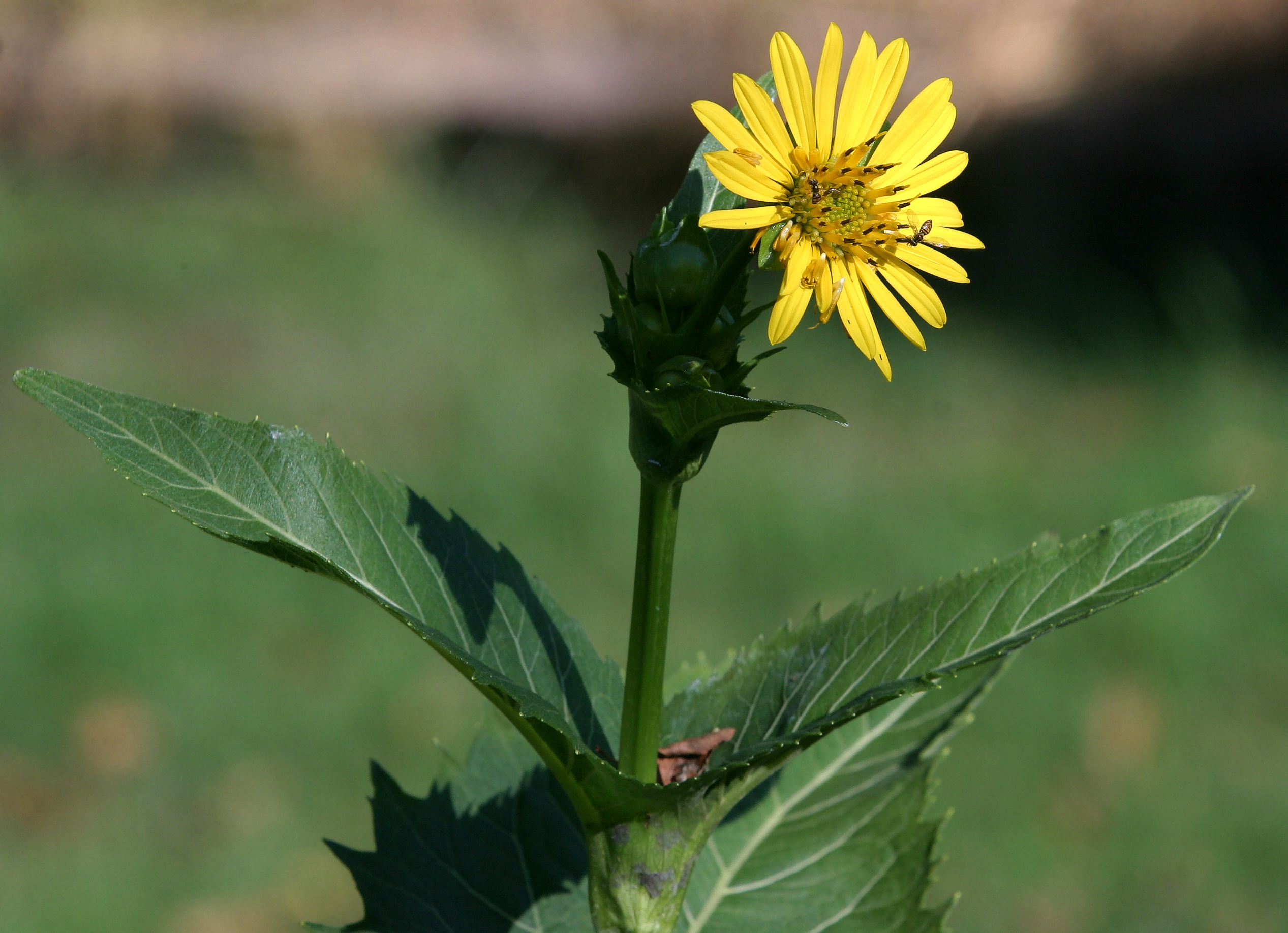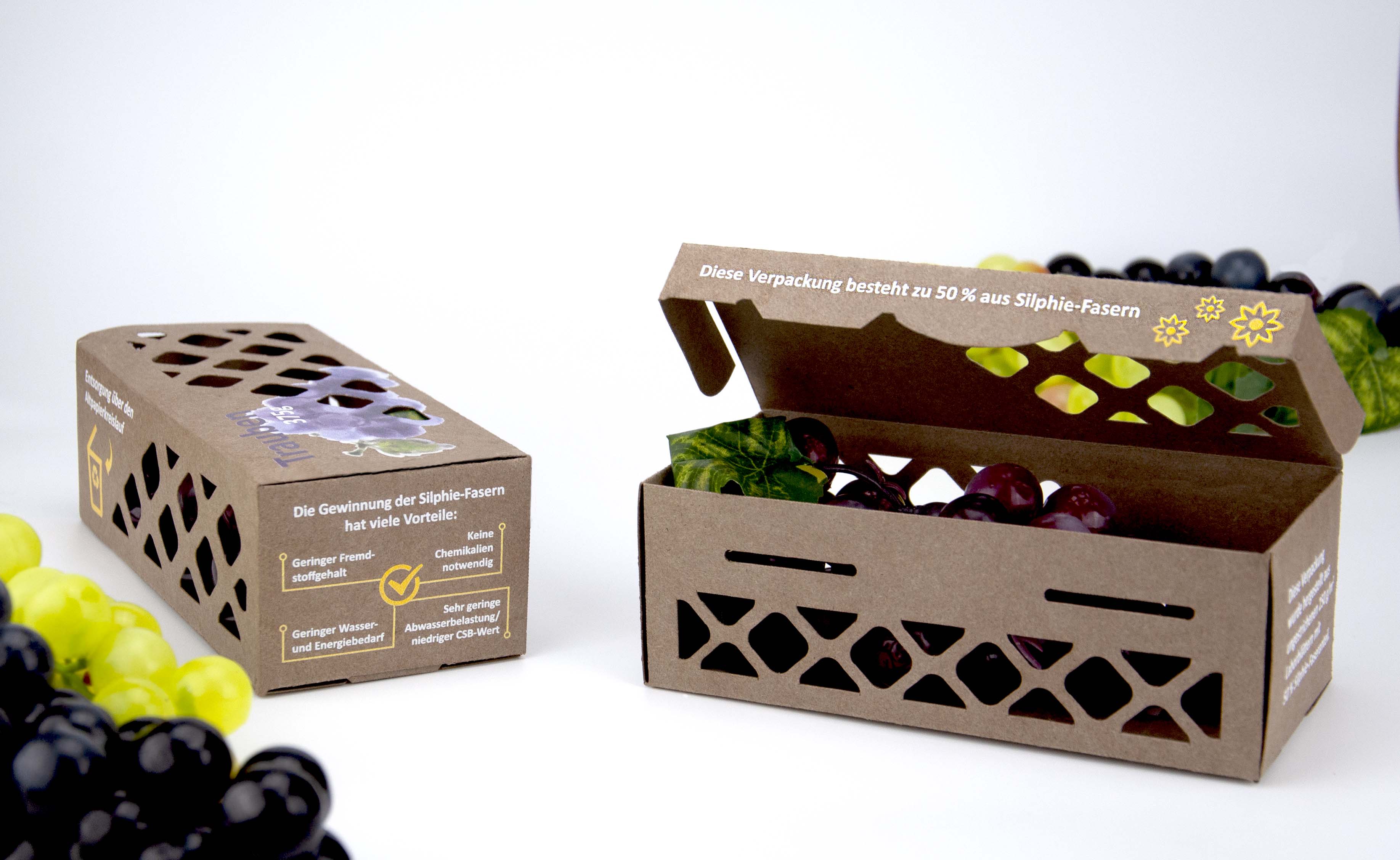Main navigation
In one cycle: ecopaper, energy and fertiliser made from Silphium perfoliatum
How much do consumers care about exactly how their paper packaging is made and what it is made of? It doesn't really matter, does it, as long as paper packaging is "eco"? Actually, that's not entirely true, because trees need to be felled even for producing recycled paper. An alternative could be paper made from Silphium perfoliatum or cup plant, a flowering plant species in the Asteraceae family. Together with partners, a company called Silphie Paper has developed a regional and decentralised concept for obtaining fibres for a new type of grass paper, while also producing heat, energy and nutrients for natural fertilisers.
The factory in the city of Lenningen on the edge of the Swabian Mountains where Silphium perfoliatum-based paper is manufactured, is 150 years old. However, the original Scheufelen paper mill had to file for insolvency in 2018. Just a year later, its successor was already up and running: Silphie Paper GmbH (ed. note: Silphie is the German name for the cup plant Silphium perfoliatum), which wholly focuses on developing and producing paper from fibres not derived from wood. Silphie Paper GmbH got off to a successful start and is currently producing several tons of the novel paper with the paper machines formerly used by the Scheufelen paper mill.
At the heart of the environmentally friendly fibres from Lenningen is the plant Silphium perfoliatum, a perennial plant with yellow composite flowers that originates from North America. "We have been researching the use of annually-renewable plants for paper production for four years now. Our major focus has been on looking into how to replace imported pulp and quickly offset the CO2 emissions generated during pulp production," reports Stefan Radlmayr, managing partner of Silphie Paper.

Together with their project partners from Energiepark Hahnennest (EPH, engl. Hahnennest Energy Park), Stefan Radlmayr and his team discovered that the cup plant was an excellent raw material for producing paper because of its high cellulose content (40%). Back then, Hahnennest Energy Park, a biogas production facility run by four local farmers focusing on substrate production and the sale of gas, electricity and heat, had already developed completely new cultivation concepts for the cup plant. "Silphium perfoliatum grows quickly and is increasingly cultivated as an energy crop in Germany, just like maize,” says Radlmayr. "However, in contrast to maize, almost no herbicides or pesticides are required to keep plants pest-free and fields weed-free. This makes flowering cup-plant fields excellent pastures for insects and bees. As a general rule, they promote biodiversity. Due to their deep roots, cup plants also cope well with irregular rainfall and quickly contribute to improving the humus layer."
Complete recycling of the cup plants on site if possible
Another very important advantage for the ecobalance of cup-plant paper is the fact that the company produces the necessary raw material by making the entire production process a closed cycle. "The harvested plants are broken down in a steam explosion plant, developed and built by the company’s partner AGRES Systems GmbH. This is based at the biogas plant at the Hahnennest Energy Park in the city of Ostrach in the south of Germany," explains Radlmayr. "Since the associated supply chain essentially already exists and is climate positive - i.e. the overall process emits less CO2 than can be bound by the annually regrowing biomass, it is therefore an extremely environmentally aware fibre production process that is also competitive and cost-efficient."
However, such an innovation does not occur in isolation: in addition to the Hahnennest Energy Park and AGRES Systems, the young company has also partnered up with a leading food retailer, the Schwarz Group, whose subsidiary OutNature GmbH markets the Silphium perfoliatum paper and was recently awarded the German Packaging Prize in the 'New Material' category for the innovation. Silphie Paper GmbH also works with Stuttgart Media University to develop the finished products - the packaging for retail and consumer goods.
Tear-resistant organic material is suitable for packaging

Silphium paper has been produced under these conditions since September 2020. Currently, about ten tons of fibres are brought to Lenningen every day. "This is not yet as much as we would like," says Radlmayr. "Unfortunately, due to approval reasons, we are currently only allowed to produce a limited amount of paper. But we are hopeful that we will soon be able to increase this to a daily production capacity of 50 tons. By then, Silphie Paper GmbH will have become another innovative small paper mill that functions well, in the tradition of the Scheufelen paper mill." At present, Silphium-based paper is still technically in an R&D phase, but this looks set to change: "OutNature has already started selling the product, not just within the Schwarz Group, but also to external customers," says Radlmayr, who is already employing 35 people at the company site. "Once we move into the next phase, the paper machines would then run continuously and we would not have to repeatedly restart them at great expense."
The novel paper is not yet completely "tree-free". Nevertheless, the proportion of silphium fibre in each ton of paper already stands at 50 percent. Four years ago, when Silphie Paper GmbH ran the first trials with grass fibres in cooperation with a company called Creapaper GmbH, grass fibre content was still as low as 20 percent and the process was very time-consuming. "Our goal is not to replace pulp completely," says Radlmayr. "We simply want to prove that alternative, pulped and regionally produced fibres can be a forward-looking and, above all, climate-neutral source of raw material for the rapidly increasing demand for fibre, especially for producing environmentally friendly packaging solutions. And the challenge of working with regional fibres without impacting the functionality of the paper produced was something we found exciting from the outset, given Scheufelen's great papermaking tradition. Today, this vision has turned into a type of paper that is highly tear-resistant and stable and therefore particularly suitable for packaging such as trays or folding boxes."
Alternative fibres from Lenningen pay off again
However, the fibres themselves are ultimately not the company’s decisive innovation. Radlmayr explains why: "Alternative fibres have of course been known in the paper production industry long before pulp became the major raw material. However, they are rarely used now because they could for a long time not be produced with the same functionality as tree pulp-based paper, and were no longer competitive. This is therefore the real plus point of the new concept." As is the case with pulp, the raw material source also becomes the energy source, additionally offering the added value of using fermentation residues for fertilising the silphium fields. The use of silphium for producing paper is therefore a prime example of what is meant by the 'circular economy'.
In coming months, the papermakers from Lenningen will be looking to optimise the silphium paper even further. In addition to working on increasing the proportion of silphium fibres, for example, the Silphie Paper GmbH team is working with Stuttgart Media University on the development of special coatings that will meet the strict hygiene regulations for food packaging.